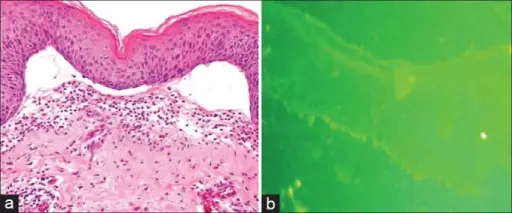Dermatitis herpetiformis is a form of chronic, pruritic, vesicular dermatosis that mostly can be associated with celiac disease.
What is the Pathology of Dermatitis Herpertiformis?
The pathology of dermatitis herpertiformis is: the study of skin disease.
-Etiology: The cause of dermatitis herpertiformis is formation of antibodies against gluten found in diet
-Genes involved: None.
-Pathogenesis: The sequence of events that lead to dermatitis herpertiformis is mostly due to genetics where persons develop IgA antibodies to gluten, as well as IgA autoantibodies that cross-react with endomysium and tissue transglutaminases, including epidermal transglutaminase expressed by keratinocytes.
-Morphology: The morphology associated with dermatitis herpertiformis shows a form of bilateral symmetry with neutrophils accumulating at the dermal papillae tips and injury to the basal layer.
-Histology: The histology associated with dermatitis herpertiformis shows neutrophilic micro abscess with eosinophils and granular deposition of the IgA antibodies of the tips of the papillary.
How does Dermatitis Herpertiformis Present?
Patients with dermatitis herpertiformis typically are maleS. The symptoms, features, and clinical findings associated with dermatitis herpetiformis include extreme pruritic urticaria, itchiness, redness and erosion, and a burning sensation.
How is Dermatitis Herpertiformis Diagnosed?
Dermatitis herpertiformis is diagnosed by physical exam, biopsy, and direct immunofluorescence.
How is Dermatitis Herpertiformis Treated?
The dermatitis herpertiformis is treated by encouraging a gluten-free diet and also the use of Dapsone medication.
What is the Prognosis of Dermatitis Herpertiformis?
The prognosis of dermatitis herpetiformis is good for those who can be able to handle a gluten free diet and dapsone medication.



